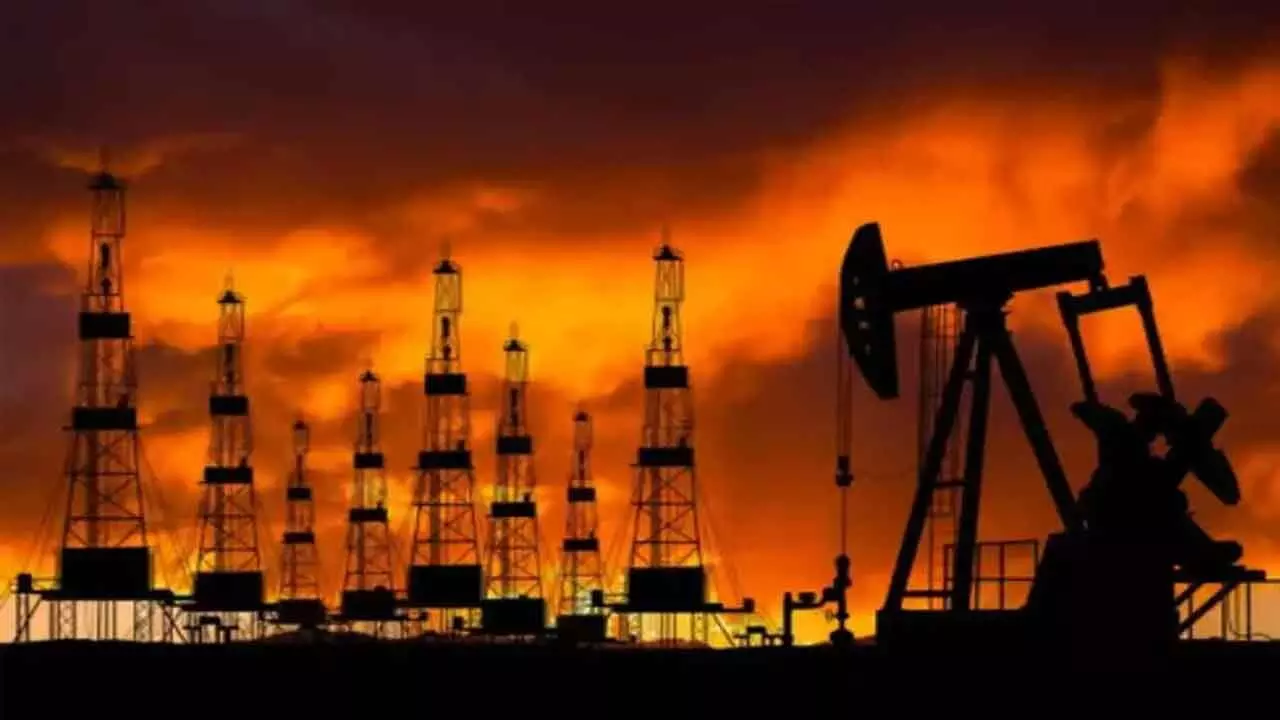Unpacking the Paradox: Why Middle East Tensions Haven't Sent Oil Prices Through the Roof
Discover why escalating US-Iran tensions haven't caused oil prices to surge. This article explains how the US shale revolution has reshaped global oil markets, making them less vulnerable to Middle East conflicts and impacting presidential foreign policy.
Unpacking the Paradox: Why Middle East Tensions Haven't Sent Oil Prices Through the Roof

Recent escalations between the US and Iran, including missile strikes on a US airbase in Qatar, might typically trigger alarm bells in global oil markets. Yet, surprisingly, oil prices have actually dropped, with Brent crude futures dipping below $70 a barrel at one point. This counterintuitive trend, according to Bloomberg opinion columnist Javier Blas, reveals a significant shift in the global oil landscape, largely driven by the monumental rise of US shale production.
For decades, the conventional wisdom dictated that any conflict in the Middle East, a region central to global oil supply, would inevitably lead to soaring oil prices. The strategic importance of waterways like the Strait of Hormuz meant that even the fear of disruption was enough to send prices spiraling. However, Blas, with 25 years of experience covering oil markets, points to two key reasons why this time is different.
Firstly, oil markets have become more discerning. They've learned from past instances where predicted supply disruptions simply didn't materialize. This has fostered a more cautious approach, preventing knee-jerk reactions based solely on geopolitical tensions.
The second, and perhaps most impactful, reason is the "post-US shale revolution era." The United States has transformed from producing around 7.5 million barrels of oil a day two decades ago to a staggering almost 21 million barrels a day today. This domestic boom has dramatically reduced America's reliance on Middle Eastern oil, especially flows through the Strait of Hormuz. Psychologically, this makes traders less inclined to price in a massive risk premium for potential disruptions in the region.
The Shale Revolution: A Game Changer
The US shale revolution, which began about 20 years ago, involved cracking a new type of rock, shale, through innovative drilling techniques – drilling vertically, then horizontally, and finally employing hydraulic fracturing (fracking) to release the trapped oil. This technological breakthrough, particularly in Texas and New Mexico, unlocked vast new production capacity.
The sheer scale of US shale production is remarkable; the US now pumps over a fifth of the world's total oil, surpassing even Russia and Saudi Arabia. This dominance has not gone unnoticed by traditional oil powerhouses like OPEC, led by Saudi Arabia, who have, at times, attempted to drive down prices to make shale uneconomic. However, shale production has proven resilient, continuing to grow, leading to a new dynamic where Saudi Arabia is also increasing its production to reclaim market share lost to US shale.
Geopolitical Implications: A New Era for US Presidents
This shift in the global oil landscape has profound geopolitical consequences. Historically, American presidents contemplating intervention in the Middle East had to weigh the almost certain consequence of higher oil prices and potentially a domestic recession due to increased gasoline costs. This acted as a significant "brake" on intervention.
However, as Javier Blas notes, President Trump might be the first American president who doesn't face such an acute concern. While higher oil prices are never ideal, the US's reduced reliance on Middle Eastern oil means that a conflict in the region is less likely to trigger a severe economic downturn at home. Trump's recent social media post, "DRILL, BABY, DRILL!!!", reflects this desire to maintain domestic production and keep prices in check, a strategy that is now more feasible than ever before.
Blas believes that a price around $75 a barrel is "about right" for the US economy – high enough to incentivize continued shale drilling but not so high as to cause widespread consumer pain. This is a stark contrast to past crises where $100+ oil prices were a very real threat.
The Strait of Hormuz: A Diminishing Threat?
Despite Iran's recent threats to close the Strait of Hormuz, the narrow waterway through which 20% of the world's oil flows, experts like Blas believe this scenario is highly unlikely. While Iran possesses the capability to disrupt shipping through tactics like missile attacks or mining, the consequences for Iran itself would be severe. Closing the Strait would effectively cut off Iran's own oil exports, a crucial source of revenue for the regime. Furthermore, it would alienate key allies like China, who rely heavily on oil transiting the Strait.
Beyond Hormuz: Other Risks to Consider
While the Strait of Hormuz may not be the immediate concern it once was, other risks to global oil markets from a protracted Middle East conflict remain. Blas highlights the vulnerability of major Saudi oil fields, which are within range of Iranian missiles or their proxies. A direct attack on such facilities, as seen briefly in 2019 by Houthi rebels, could be far more devastating to global supply than a temporary disruption in the Strait.
In the near term, the ongoing conflict has already influenced American oil production. The recovery of oil prices to around $75 a barrel, spurred by Middle East tensions, has enabled US shale companies to lock in future prices, suggesting higher American oil production in late 2025 and into 2026 than previously expected.
Looking further ahead, while the US shale revolution has provided a significant buffer, shale is not an infinite resource. Eventually, American oil production will peak. Without sustained investment in green energy sources – an area President Trump has historically resisted – the US could find itself once again heavily reliant on oil imports, potentially returning to a scenario reminiscent of two decades ago. For now, however, the new dynamics of the global oil market are playing a crucial role in mitigating the economic fallout of Middle East tensions.

